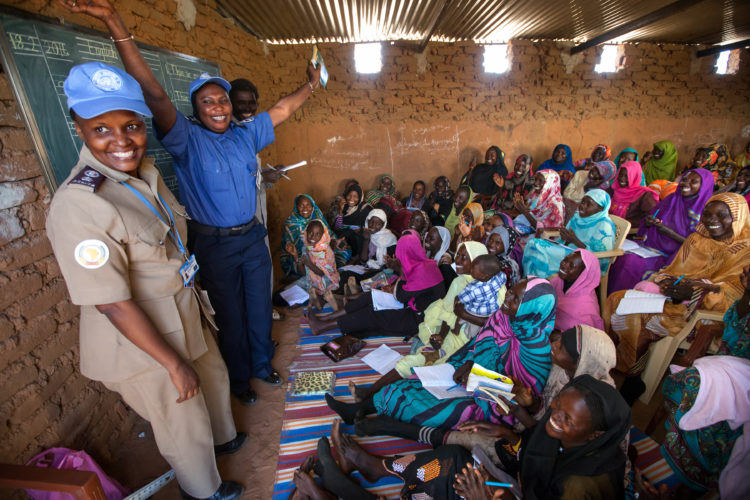Global poverty is a complex issue that has long plagued the world. There exists no interchangeable template to fix poverty throughout the world. Strategies that work in the U.S. will not necessarily work in places like Africa or the Middle East. One could argue that the principles to combat poverty are more or less the same, but their application has to be region-specific and there will always be differing opinions on the best application strategy.
For the past decades, we have been experiencing an upswing and spread of wealth throughout the world. The U.S. National Intelligence Council believes this is the answer to reducing global poverty. Yet, while decades of global integration and advancing technology enriched the richest nations and lifted billions out of poverty, mostly in Asia, that also hollowed out the Western middle classes and stoked pushback against globalization. Additionally, migrant flows are greater now than in the past 70 years, thus raising the specter of drained welfare coffers and increased competition for jobs, and reinforcing nativist, anti-elite impulses.
The U.S. National Intelligence Council has determined that there is currently an unprecedented shift in economic wealth taking place from western states to eastern ones. This is driven by the global demand for oil and commodities, which generates excessive revenues for the Gulf States and Russia. Asia has also cornered the market for cheap manufacturing and service industries, thus leading to a large portion of manufacturers outsourcing production to Asia. Tellingly, the U.S. imports over 500B worth of goods per year from China alone.
The economic approach of these states has not been a traditional one. They are not following the Western liberal model for self-development. They are instead using a different model: state capitalism. Economists define state capitalism as the economic system that is centered on the state management of the market.
In addition to the spread of global wealth, the Intelligence Council highlights that as early as 2050, the BRICs (Brazil, Russia, India, and China) have the potential to jointly equal the G7s’ gross domestic product (GDP). The facts are simple: global wealth is becoming much greater.
As globalization has been taking place, international trade has increased per capita income across the globe. The World Bank produced a study in 1999, which estimates “increasing the ratio of trade to international output by one percentage point raises per capita income by between 0.5 and 2 percent.” Author Peter Marber explains how an increased per capita income leads to higher purchasing power. When consumers purchase more, the result is a stimulation of economic growth. Cross-border trade always simulates economic growth, and free-market practices support the increase of wealth, which Marber ultimately defines wealth as “the ability to work less and consume more.” All of these processes are involved in an economic cycle that creates a thriving middle class, which is the key to global economic, political, and social stability.
Let us now focus on the continent of Africa, which has been experiencing a number of developments.
The Economist highlights Africa’s turn towards success and future promise, both economically and politically. Across the entire continent of Africa, economic growth is outpacing any other region in the world. How is Africa growing at this extraordinary pace? The majority of the countries in Africa are not exporting oil or delivering super cheap industrial labor. Instead, they have turned to mining minerals and precious stones and exporting livestock on a massive scale. During my trips to Africa, I personally saw these mines, but often they were not operated or owned by African companies. Overall, during the past decade, Africa has increased its global trade volume by 200 percent.
With the development of industry and an increase in international trade, Africa has built a robust middle class equal to that of India. This is a bold statement because there are many countries in Africa — many much poorer than others. The United Nations is significantly involved in Africa’s development. It started the Millennium Development Goals for Africa initiative with the number one goal of eradicating extreme poverty and hunger in Africa. Although it has been –and will be — a slow process, positive effects are happening throughout the continent.
Africa, as a whole, has started to reduce its levels of foreign debt as it simultaneously increases its technological infrastructure and other non-commodity based trade. With concentrated efforts and micro-level investments, the Africans have flipped a continent of disease and hunger into a promising hub for trade.
Despite its importance to economic process and poverty reduction throughout Asia and Latin America, agriculture remains a neglected sector in Africa. A Brookings report appropriately highlights this gap and draws attention to transforming the livelihoods of small-holder farm households. One reason for current neglect is the failure of the many interventions in rural areas. Within Africa, 85 percent of the population lives in rural areas.
Already have an account? Sign In
Two ways to continue to read this article.
Subscribe
$1.99
every 4 weeks
- Unlimited access to all articles
- Support independent journalism
- Ad-free reading experience
Subscribe Now
Recurring Monthly. Cancel Anytime.
In conclusion, there is certainly not a “one size fits all” approach to address such complex issues. Yet, spreading wealth is a step in the right direction. Understandably, this is not a perfect solution, but if each country has enough wealth to build economic outreach programs, it can start chipping away at poverty.









